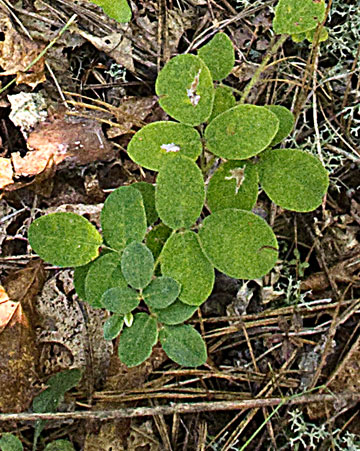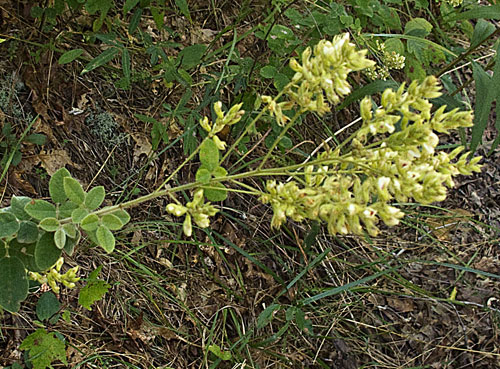Their upper surface is finely pubescent, while their lower surface is softly hairy. The upper stems terminate in rather short spike-like racemes of flowers about 1-3" long. The hairy flowering stalks (peduncles) are often longer than either the leaflets or the inflorescence. The spike-like racemes have whorls of flowers that are densely crowded together. Each flower is about 1/3" (8 mm.) long and cream-colored, usually with a purple spot at the base. It has a typical pea-like flower structure, consisting of a standard and keel. The calyx lobes are longer than the flowers. They are hairy, narrow, and taper to a sharp point, turning brown with maturity. This species of bush clover rarely produces cleistogamous flowers. The blooming period occurs during the late summer and lasts about 3 weeks. There is no noticeable floral scent. Each flower is replaced by a seedpod that is short, flat-sided, and pubescent, with its outer tip consisting of a short beak. This seedpod is about the same length or shorter than the calyx lobes. The root system consists of a taproot. This plant spreads by reseeding itself.
HOME 'B' LIST

Hairy Bush Clover is one of several Lespedeza spp. that occur in Oak woodlands or savannas. This species is not very showy as the small flowers are partially hidden by the long calyx lobes. It can be distinguished from these other species by its cream-colored flowers, unusually broad leaves, and very hairy stems. A distinguishing characteristic are the long peduncles, which are often longer than the leaflets and spike-like racemes.

 Hairy lespedeza or Bush-clover
Hairy lespedeza or Bush-clover